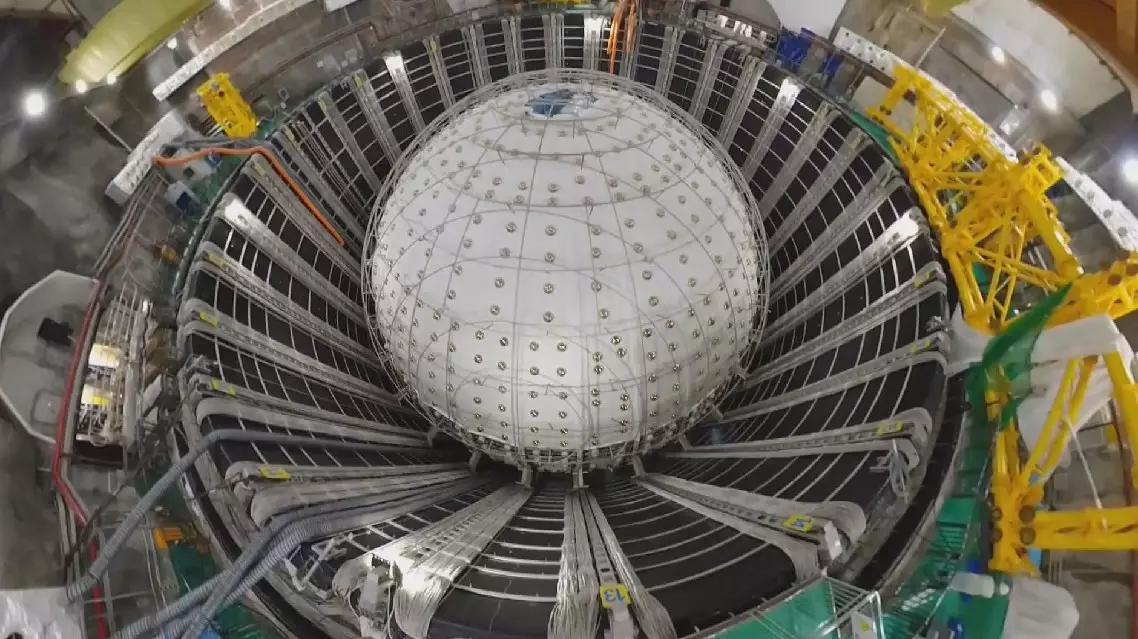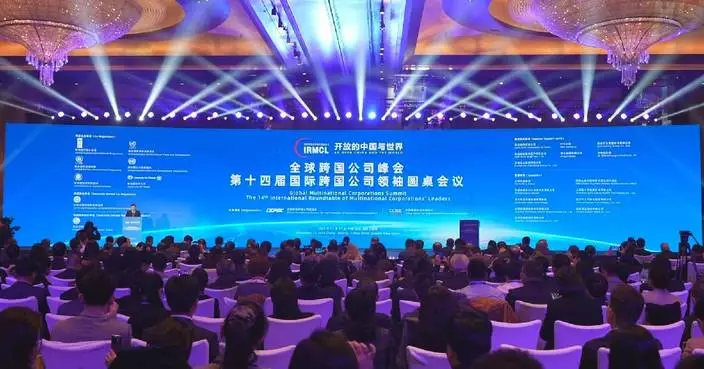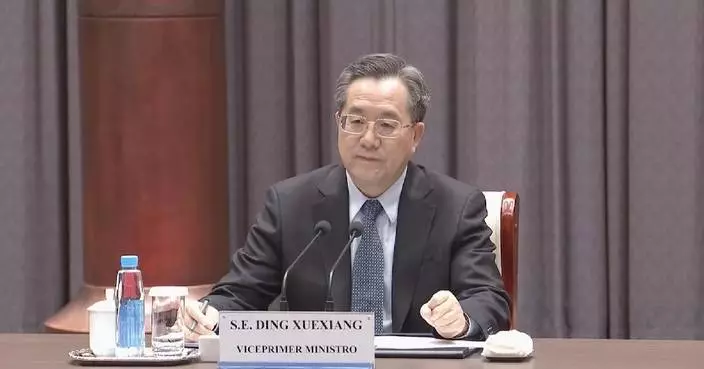Helen Saez, a 35-year-old Colombian who is a procurement manager of the China-built Ituango hydropower project, said the project opens a new chapter in large-scale projects and commercial cooperation between China and Colombia.
The Ituango hydropower plant, invested by the Power Construction Corporation of China in Colombia, is the largest installed hydropower station under construction in the Americas and will solve 12 percent of Colombia's electricity demand after the project is completed.
Saez said she greatly admires her Chinese colleagues' discipline and professionalism in their work, as well as their determination not to give up in the face of difficulties.
"To me, this is a school where I can grow alongside them. The Ituango Hydropower Plant is very important for Colombia. Everyone is working extremely hard. We are overcoming various difficulties and challenges. United and working together, we strive to complete this project in the shortest possible time," she said.
The project has become an important source of employment, providing many opportunities for entrepreneurs, the Colombian staff member said.
"Currently, we have observed many small entrepreneurs in the surrounding areas collaborating with the project to supply the necessary materials. If this is just the beginning, and it has already benefited many people, then future benefits will be even greater," said Saez.
Colombia has the resources, potential, and conditions necessary to advance the project, while China contributes to this process through its technological, experiential, and knowledge advantages, she said. Saez believes that with the joint efforts of both countries, this project is moving toward rapidly.
"We hope that the project can progress smoothly, allowing China to continue leveraging its technology and knowledge to maximize Colombia's resource advantages. This will help improve the country, promoting progress in various areas such as the economy, business, and cultural exchange. It can be said that this is a great starting point for China and Colombia to embark on the path of cooperation together," she said.
Saez expects this good relationship to continue to grow and take full advantage of China's technology and Colombia's resources to achieve sustainable development for her country.

Colombian youth hopes for closer cooperation between China and Colombia through hydropower project
The primary detector for the Jiangmen Underground Neutrino Observatory (JUNO) is set to be completed on Wednesday, marking a major step in the quest to comprehend these "ghost particles" and enhance our understanding of the universe.
Located 700 meters underground in south China's Jiangmen City, the world's largest transparent detector is a 12-story-tall acrylic sphere with a diameter of 35.4 meters.
The gigantic sphere, weighing approximately 600 tons, composed of 265 pieces of 12-centimeter-thick acrylic panels, has been meticulously assembled from top to bottom by the construction team. Tests have demonstrated that the acrylic used in the construction of the detector exhibits exceptional tensile strength and impact resistance, ensuring its durability and effectiveness in the challenging underground environment.
The construction of the challenging project was launched by the Chinese Academy of Sciences (CAS) and the Guangdong government in 2015. Installation of the entire device is expected to be completed on Wednesday, and the full operation of the facility is scheduled for August 2025.
Neutrinos are critical components of the material universe, playing essential roles since the beginning of time. They are integral to the processes that power the sun and influence the formation of galaxies, planets, and life itself. Despite their discovery in 1956, many mysteries surrounding neutrinos remain unsolved due to their elusive nature.
Historically, atoms were once considered the smallest building blocks of matter. However, ongoing research has revealed that the universe is made up of six types of quarks and six types of leptons, among which neutrinos exist in three forms: electron neutrinos, muon neutrinos, and tau neutrinos. They are capable of transforming into one another, a phenomenon known as neutrino oscillation.
"Neutrinos are incredibly abundant in the universe, having originated at its inception. The term 'ghost particle' highlights their extreme difficulty of detection, as they interact with matter so rarely that blocking them is nearly impossible. Their ability to penetrate matter is extraordinarily high, making them exceedingly challenging to study," said Heng Yuekun, a researcher at the Institute of High Energy Physics (IHEP) of the CAS.
The new neutrino detector's underground location allows it to effectively shield itself from cosmic rays and other external interferences, ensuring that neutrinos can be captured and studied without obstruction.
"We aim to determine the absolute mass of neutrinos while exploring their oscillations to understand the relative mass differences between them. Through this mass research, we can construct a theoretical framework for our understanding of the material world, which can also be linked to the evolution of the universe. This will help us comprehend both the universe and the material world," said Wang Yifang, chief scientist of the project.
Once completed, JUNO is expected to capture approximately 40 reactor neutrinos, several atmospheric neutrinos, one geoneutrino and thousands of solar neutrinos every day.
JUNO is the second China-based neutrino project, following the Daya Bay Reactor Neutrino Experiment in Guangdong. Chinese and foreign physicists announced in 2012 that they had measured a third type of neutrino oscillation in the Daya Bay experiment. The scale of JUNO is much larger than the Daya Bay experiment with more sensitive detection.
Over 700 scientists from 74 institutions in 17 countries and regions including France, Italy, Russia, Germany and Belgium have joined the JUNO international collaboration.
Experts emphasize that neutrino research falls within the realm of fundamental science and represents one of the most advanced scientific fields globally. While the implications of this research may not yield immediate changes in daily life over the next decade or two, its long-term potential is significant.
Similar to how James Clerk Maxwell's theories in the 1860s predicted the existence of electromagnetic waves, laying the groundwork for the electrical age, current neutrino research could eventually reshape our understanding of the cosmos.

China's neutrino project nears completion, unlocking secrets of universe's "ghost particles"










